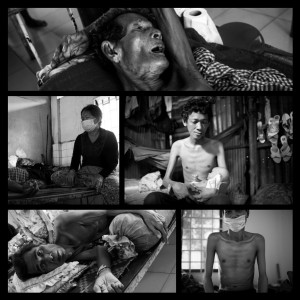Every year, tuberculosis (TB) takes the lives of 1.7 million people, worldwide. TB is an airborne disease that can be termed the “King” of all bacterial infections. Dr. Santiago Ramon-Garcias has made it his mission to find a successful treatment for this deadly disease and has been working with this bacteria for over six years. Currently, he works in the Thompson Lab at the Life Sciences Center at UBC, and he has written several research papers on this topic. His approach is very different from most researchers, because he is looking for combinations of existing drugs that are effective against tuberculosis to come up with the perfect combination drug treatment, rather than creating a brand new drug.
Dr. Ramon-Garcias and his team are looking for new therapeutic drug combinations that can treat TB, especially the drug resistant forms of the disease. Their approach is more cost efficient and, upon completion, will take much less time to treat and cure TB patients. The researchers used existing drugs and combined them in many ways to see which combination was the most effective. They determined the best combinations through several tests and narrowed it down to a few combinations that are promising for TB. To explain how the effective drug combinations work, he uses the analogy “2+2=16.” In other words, when the drugs work together, in synergy, their effects are amplified and, the effect of their combination is more than the sum of their individual effects.

This video introduces Dr. Garcias and tells about the devastating disease that is tuberculosis. Also, a brief background and the methods used for this research are talked about. In addition, there is an analogy of how combination drugs work against tuberculosis.
According to Dr. Ramon-Garcias, the current treatment for TB has two phases. Phase one requires patients to take several antibiotics for six months. If the patients follow the procedures properly, there is a 90% rate of success, meaning 90% of all patients get cured. However, many patients do not complete the process, and stop taking the antibiotics when the symptoms start disappearing, thinking they are cured. This is the period when the TB bacteria becomes resistant to the drugs and, when the symptoms return, the same drugs are no longer effective. When the first phase fails, the patients go through the second phase of the treatment, which takes 20 months to complete. The second phase drugs are more expensive and have more severe side effects. These treatments are time-consuming, costly and extremely toxic, which is what motivates Dr. Ramon-Garcias to invest in this research.
The following podcast describes the results of this study, the main motivations behind this research, and how combination drug therapies are essential in combating TB.
Audio clip: Adobe Flash Player (version 9 or above) is required to play this audio clip. Download the latest version here. You also need to have JavaScript enabled in your browser.
Although there is a lot that still needs to be done in this field, and a cure is not yet in reach, Dr. Ramon-Garcias is very hopeful and knows that one day, tuberculosis will be eradicated entirely.
-Maryam Goharian, Tony Hui, Achla Jha, and Daniel Liao Citations


